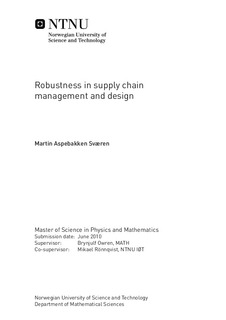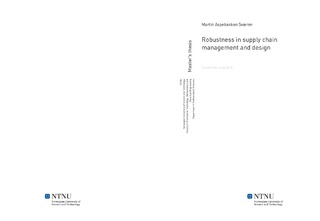| dc.description.abstract | We have studied a supply chain for delivering biomass to heating plants where there are uncertainty in demand. Design of such supply chains considers finding the optimal terminal structure and an optimal inventory policy. Such problems may become complex and difficult to solve manually. We have therefore developed optimization models based on three approaches in order to solve the problem; a deterministic optimization approach with preset required safety stock levels, a robust model and a stochastic model.
We have used these models to solve one test case and two large industrial cases. As fixed costs of opening terminal were unknown, the models were runned with a preset number of opened terminals. In order to solve the two industrial cases on a normal computer we needed to reduce the size of the problem. This was done by use of supplier and assortment aggregation, arc-removal, presolving and an LP-relaxation based heuristic. We have shown that if the proper aggregation approach is used, the use of aggregation could reduce the size of the problems considerably while only marginally reduce the quality of the solutions. The LP-relaxation based heuristic speeded up the solution times, but the solution quality may become poorer when the number of opened terminals is low.
We have found that robustness could be achieved by increasing the capacities in the supply chain, increasing inventories or by deciding on the optimal terminal structure. The stochastic and robust optimization approach returned higher objective values than the deterministic approach. The reason seemed to be the increased safety stock levels used in the deterministic approach.
The stochastic and robust solutions were evaluated by use of the value of stochastic solution (VSS), and value of robust solution (VRS). The two approaches returned solutions which performed better in the future than the deterministic model, and the models gave similar solutions. The stochastic model used less memory and less solution time. | |

